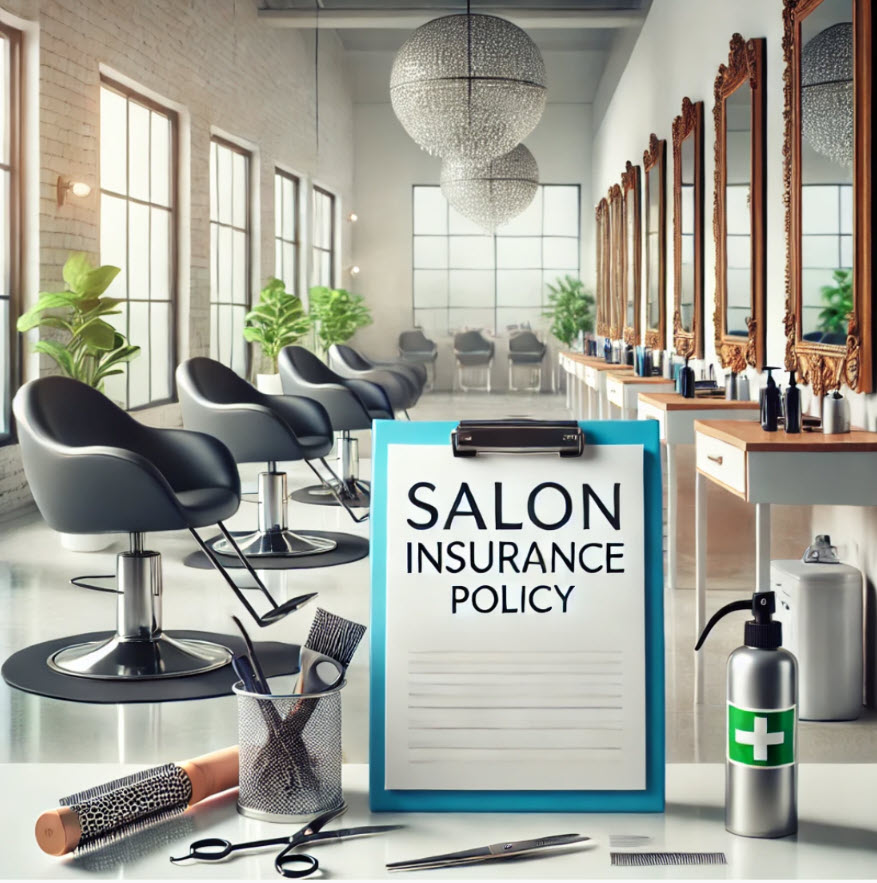Running a beauty or hair salon involves creativity, precision, and exceptional customer service. But behind the scenes, insurance companies may be taking advantage of salon owners with hidden fees, vague coverage terms, and premium hikes. Without industry-specific knowledge, many salon owners find themselves overpaying for inadequate coverage, leaving their business exposed.
Insurance is meant to protect your salon, yet gaps in coverage and exploitative practices can result in significant financial strain. By understanding these risks and taking proactive measures, you can safeguard your business and your livelihood.
In this article, we’ll uncover nine ways insurance companies exploit salon owners and provide actionable strategies to ensure your business is fully protected.
1. Offering Insufficient Coverage for Equipment and Supplies
Hair dryers, styling chairs, and specialized tools are essential to running a salon. However, many insurance policies fail to adequately cover these high-value items. Damage or theft of equipment can leave salon owners scrambling to cover replacement costs out of pocket.
For example, a fire or water damage could ruin thousands of dollars worth of supplies and tools. Without sufficient coverage, recovering from such an incident can be financially devastating.
How to Protect Yourself
- Ensure your commercial property insurance includes coverage for tools, equipment, and furniture.
- Update your policy annually to reflect the current value of your salon assets.
- Work with an agent who understands the unique needs of salons.
2. Neglecting Liability Coverage for Customer Accidents
Accidents happen, even in the most carefully managed salons. A customer could slip on a wet floor or experience an allergic reaction to a product. Without adequate liability insurance, salon owners may face costly lawsuits and legal fees.
Many policies have caps on liability coverage, which may not be sufficient for larger claims. Understanding these limitations is crucial to avoid unexpected out-of-pocket expenses.
How to Protect Yourself
- Secure general liability insurance that covers accidents involving customers.
- Include product liability coverage for potential reactions to salon products.
- Regularly assess your liability limits to ensure they match your business’s risk profile.
3. Overlooking Employee-Related Risks
Salon employees face unique risks, including repetitive motion injuries, exposure to chemicals, and burns from styling tools. Without worker’s compensation insurance, salon owners may be held liable for medical expenses and lost wages.
Additionally, disputes over pay or workplace harassment can lead to costly legal actions if employment practices liability insurance (EPLI) is not in place.
How to Protect Yourself
- Invest in worker’s compensation insurance to cover employee injuries.
- Train staff on proper safety protocols and ergonomics to minimize workplace risks.
- Consider EPLI to protect against employment-related claims.
4. Delaying Claims Payments
When equipment breaks down or your salon suffers property damage, timely insurance payouts are critical to minimizing downtime. However, some insurance providers create unnecessary delays, leaving salon owners unable to repair or reopen quickly.
These delays can lead to lost income and frustrated clients who turn to competitors for services.
How to Protect Yourself
- Choose an insurer with a reputation for fast and fair claims processing.
- Maintain thorough documentation of damages and expenses to streamline claims.
- Follow up regularly to ensure your claim progresses without unnecessary delays.
5. Selling Unnecessary Add-Ons
Insurance companies often upsell salon owners on policies they don’t need, such as excessive liability limits or irrelevant add-ons like cybersecurity coverage. While these extras may sound useful, they can inflate your premiums without providing meaningful benefits.
For instance, a small salon with minimal online activity likely doesn’t need extensive cyber liability insurance. Understanding what your salon truly needs can help avoid these unnecessary costs.
How to Protect Yourself
- Assess your business’s risks and decline coverage for irrelevant scenarios.
- Compare quotes from multiple providers to identify unnecessary add-ons.
- Work with a broker who prioritizes your needs rather than upselling.
6. Failing to Account for Business Interruption
Natural disasters, power outages, or equipment failures can temporarily shut down your salon. Without business interruption insurance, covering ongoing expenses like rent, utilities, and employee wages during downtime can be a significant financial burden.
Many salon owners overlook this critical coverage, leaving their business vulnerable to unexpected closures.
How to Protect Yourself
- Add business interruption insurance to your policy to cover revenue losses.
- Ensure coverage extends to key expenses like rent and payroll.
- Plan for potential disruptions with a disaster recovery strategy.
7. Raising Premiums After Claims
Filing an insurance claim often results in higher premiums, even if the claim was unavoidable. For salon owners, these increases can strain budgets and discourage them from filing necessary claims in the future.
Understanding how claims impact premiums and negotiating terms can help manage these increases.
How to Protect Yourself
- Research providers that offer stable premium structures post-claim.
- Negotiate terms with your insurer to cap premium hikes.
- Review your policy regularly and compare rates to ensure fair pricing.
8. Ignoring Seasonal Risks
Salons often experience fluctuations in demand, such as during the wedding or holiday seasons. Many insurance policies don’t account for these changes, leaving salons underinsured during peak periods when they have higher revenue and client activity.
How to Protect Yourself
- Adjust your policy limits to reflect seasonal changes in business activity.
- Work with your insurer to temporarily increase coverage during high-demand periods.
- Regularly review your policy to ensure it aligns with your salon’s operational cycles.
9. Overlooking Cybersecurity for Booking Systems
Modern salons often rely on online booking systems to manage appointments, payments, and customer data. However, many insurance policies fail to include cybersecurity coverage to protect against data breaches or system hacks. A breach could result in significant legal and reputational costs.
How to Protect Yourself
- Add cyber liability insurance to protect against online data breaches.
- Use secure, encrypted booking and payment platforms.
- Train staff to recognize phishing attempts and other cyber threats.
Conclusion
Salon insurance is meant to provide protection and peace of mind, but exploitative practices by insurance companies can leave salon owners vulnerable. From insufficient coverage to unnecessary add-ons, understanding these risks is the first step toward safeguarding your business.
By tailoring your policies to your salon’s specific needs and working with trustworthy advisors, you can avoid falling into these traps. Investing in the right insurance today ensures your business, employees, and customers are protected for the future.
With proactive measures and a clear understanding of your insurance needs, you can focus on delivering exceptional service and growing your salon with confidence.
Learn more about the various types of insurance for businesses.

